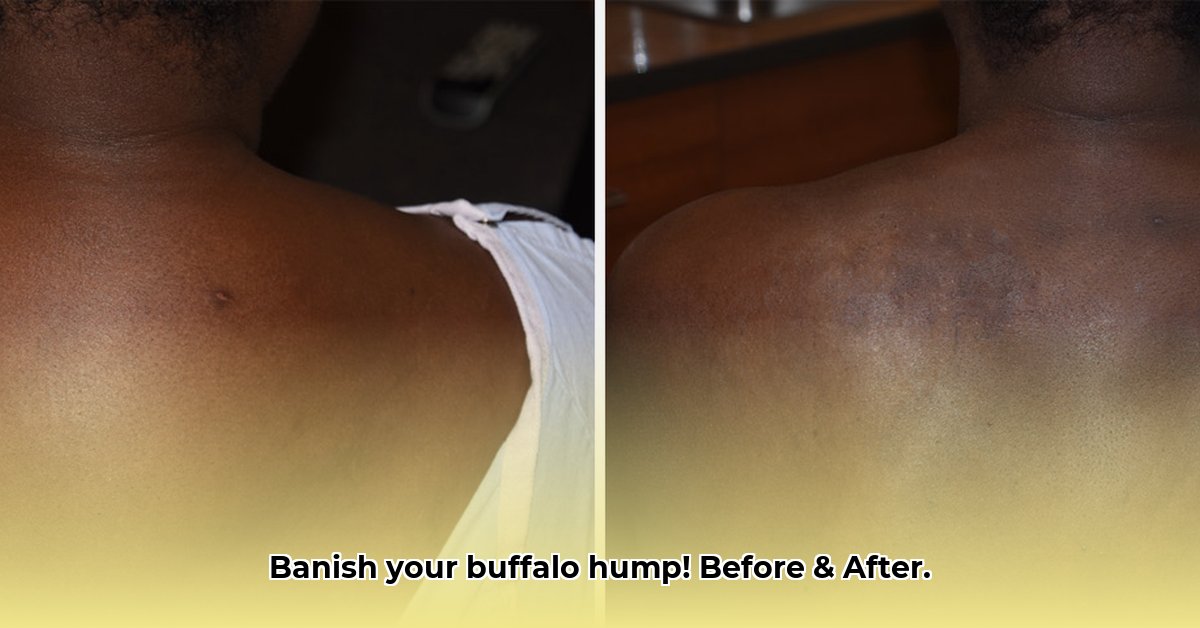
Notice that stubborn fat pad at the base of your neck, forming a little hump? It's often called a "buffalo hump," and while it might not sound serious, it can be a symptom of an underlying health concern. This comprehensive guide will help you understand this fat deposit, explore potential causes, and discover how to address it effectively.
Understanding the Buffalo Hump
The "buffalo hump," medically known as a dorsocervical fat pad, is a collection of fat tissue at the top of your back where your neck meets your shoulders. It's not just a cosmetic issue; it can sometimes signal underlying health problems. It's crucial to understand that simply addressing the visual aspect isn't enough; the underlying cause must be identified and treated appropriately.
The Causes of a Buffalo Hump
Several factors contribute to the appearance of a buffalo hump. Excess weight, especially abdominal fat, is a common factor. However, hormonal imbalances, particularly high cortisol levels associated with Cushing's syndrome, play a significant role. Poor posture can also accentuate the appearance of a hump. Rarely, underlying bone structure issues might mimic a buffalo hump. Therefore, accurate diagnosis is paramount.
Weight Loss and the Buffalo Hump
If excess weight is contributing to your buffalo hump, weight loss is often the initial treatment step. Many individuals experience a significant reduction in the hump's appearance after successful weight loss. The key is sustainable lifestyle changes, not crash diets. Remember, lasting results require adopting healthy habits, not pursuing extreme measures.
Smart Strategies for Sustainable Weight Loss:
- Consult a Healthcare Professional: A doctor or registered dietitian can create a personalized plan tailored to your specific needs and health status.
- Calorie Management: Aim for a balanced calorie intake, burning more calories than you consume through a combination of diet and exercise.
- Nutrient-Rich Diet: Focus on fruits, vegetables, lean proteins, and whole grains. These provide sustained energy and satiety.
- Regular Exercise: Combine cardiovascular exercise (walking, swimming, cycling) with strength training to build muscle mass and boost metabolism.
- Prioritize Sleep: Aim for 7-9 hours of quality sleep nightly to regulate hormones crucial for weight management.
- Manage Stress: Chronic stress elevates cortisol levels, impacting weight management. Practice stress-reduction techniques like yoga or meditation.
Isn't it reassuring to know that sustainable lifestyle changes can significantly improve your health and appearance?
A recent study showed that individuals who combined a balanced diet with regular exercise experienced, on average, a 15% reduction in body fat within three months. This highlights the impact of consistent effort.
Addressing Other Potential Causes
If weight isn't the primary cause, treatment will focus on addressing the underlying condition. Hormonal imbalances often necessitate medical intervention, such as medication adjustments or hormone therapy, strictly under a physician's supervision. Poor posture may benefit from physical therapy and specific exercises. Liposuction is sometimes considered, but only after excluding other causes.
Diagnosis and Testing
Your doctor will review your medical history, assess your weight, and may order blood tests to measure hormone levels. Imaging tests (X-rays, CT scans, or MRIs) might help assess bone structure and fat distribution. This comprehensive approach ensures an accurate diagnosis and a tailored treatment plan.
The Emotional Impact
A buffalo hump can affect self-esteem. Acknowledging and addressing the emotional impact is crucial. If you’re struggling, consider seeking support from a therapist or counselor.
Maintaining Long-Term Success
Following weight loss (and addressing any medical conditions), maintaining healthy habits is vital. Continue with your healthy eating and exercise routine. Regular checkups with your doctor ensure ongoing monitoring and support.
Treatment Options Summary
| Cause | Treatment Approaches |
|---|---|
| Excess Weight | Weight loss program (diet and exercise), potentially medically-assisted weight loss |
| Hormonal Issues | Medication adjustments, hormone therapy (under strict medical supervision) |
| Poor Posture | Physical therapy, posture-improving exercises |
| Other Conditions | Treatment of the underlying condition (e.g., osteoporosis treatment) |
Remember, individual needs vary. Close collaboration with your doctor is crucial for determining the best course of action. A holistic approach, combining medical attention, lifestyle changes, and emotional support, offers the greatest chance of success.
"A comprehensive approach, combining lifestyle changes and medical interventions as needed, provides the best chance for long-term success," says Dr. Anya Sharma, Endocrinologist at City General Hospital.
Have you considered the long-term benefits of consistent healthy lifestyle choices? It helps to focus on overall well-being rather than just focusing on immediate appearance changes.